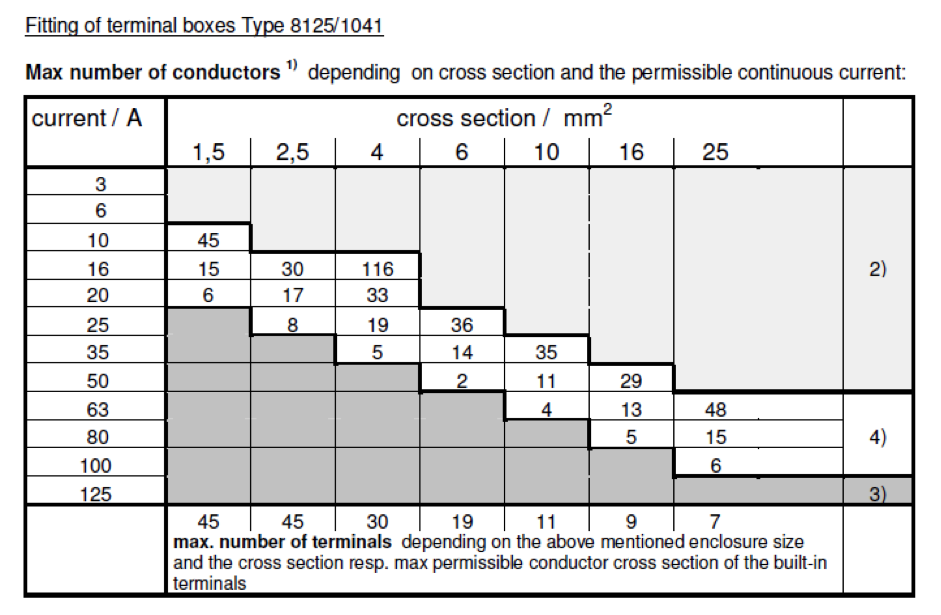Some Ideas on Roar Solutions You Need To Know
Some Ideas on Roar Solutions You Need To Know
Blog Article
Roar Solutions - An Overview
Table of ContentsThe 15-Second Trick For Roar SolutionsExamine This Report about Roar SolutionsRoar Solutions Can Be Fun For Anyone
In order to safeguard setups from a possible surge a technique of analysing and categorizing a potentially unsafe area is required. The function of this is to ensure the right option and installment of devices to inevitably protect against a surge and to make certain safety and security of life.
(https://au.pinterest.com/pin/1124703706941720474)
No tools ought to be installed where the surface temperature of the devices is higher than the ignition temperature level of the offered risk. Below are some typical dust harmful and their minimum ignition temperature. Coal Dirt 380C 225C Polythene 420C (thaws) Methyl Cellulose 420C 320C Starch 460C 435C Flour 490C 340C Sugar 490C 460C Grain Dust 510C 300C Phenolic Material 530C > 450C Aluminium 590C > 450C PVC 700C > 450C Soot 810C 570C The likelihood of the hazard existing in a focus high sufficient to cause an ignition will certainly vary from area to place.
In order to categorize this danger an installment is divided right into areas of threat depending upon the quantity of time the unsafe is present. These areas are referred to as Zones. For gases and vapours and dirts and fibres there are three zones. Zone 0 Zone 20 A dangerous atmosphere is extremely likely to be present and might exist for lengthy periods of time (> 1000 hours each year) or perhaps continually Area 1 Area 21 A harmful ambience is possible however not likely to be present for lengthy periods of time (> 10 450 C [842 F] A category of T6 implies the minimum ignition temperature level is > 85 C [185 F] Dangerous location electrical tools possibly designed for use in higher ambient temperature levels. This would showed on the rating plate e.g. EExe II C T3 Ta + 60C( This implies at 60C ambient T3 will certainly not be gone beyond) T1 T1, T2, T3, T4, T5, T6 T2 T2, T3, T4, T5, T6 T3 T3, T4, T5, T6 T4 T4, T5, T6 T5 T5, T6 T6 T6 A T Class rating of T1 means the maximum surface temperature level generated by the instrument at 40 C is 450 C. Presuming the linked T Class and Temperature score for the tools are ideal for the area, you can always utilize an instrument with a much more rigorous Division score than required for the location. There isn't a clear solution to this question. It truly does rely on the sort of tools and what fixings need to be performed. Equipment with specific examination procedures that can't be performed in the field in order to achieve/maintain 3rd party rating. Must return to the manufacturing facility if it is prior to the tools's solution. Area Fixing By Authorised Personnel: Complex screening might not be required however specific treatments might require to be complied with in order for the tools to maintain its third celebration rating. Authorised workers have to be utilized to execute the work properly Repair service must be a like for like substitute. New component need to be considered as a direct substitute calling for no special testing of the equipment after the repair is complete. Each tool with an unsafe ranking need to be evaluated independently. These are laid out at a high level listed below, yet for even more comprehensive info, please refer directly to the guidelines.
Some Ideas on Roar Solutions You Should Know
The devices register is a detailed database of devices records that consists of a minimum set of fields to determine each item's location, technical specifications, Ex-spouse classification, age, and environmental data. The proportion of Comprehensive to Shut assessments will be determined by the Devices Threat, which is analyzed based on ignition threat (the possibility of a resource of ignition versus the possibility of a flammable environment )and the harmful location category
( Zone 0Area 1, or 2). Applying a durable Risk-Based Assessment( RBI )technique is critical for guaranteeing conformity and safety and security in managing Electrical Devices in Hazardous Areas( EEHA).
3 Easy Facts About Roar Solutions Described

In terms of explosive risk, a dangerous area is an atmosphere in which an explosive ambience is existing (or might be anticipated to be existing) in amounts that require special precautions for the building, installment and use devices. eeha certificate. In this article we explore the difficulties encountered in the office, the risk control procedures, and the required expertises to work securely
It is an effect of modern-day life that we make, store or take care of a variety of gases or liquids that are deemed combustible, and a series of dirts that are regarded flammable. These compounds can, in specific problems, form explosive atmospheres and these can have major and tragic repercussions. Many of us recognize with the fire triangular eliminate any type of among the 3 elements and the fire can not take place, but what does this mean in the context of hazardous locations? When damaging this down right into its most basic terms it is basically: a mix of a certain quantity of release or leak of a certain substance or material, blending with ambient oxygen, and the presence of a source of ignition.
In many circumstances, we can do little regarding the degrees of oxygen airborne, however we can have substantial influence on resources of ignition, for instance electric equipment. Unsafe locations are documented on the unsafe location classification drawing and are determined on-site by the triangular "EX-SPOUSE" indicator. Below, among other key details, zones are split right into 3 types depending on the threat, the likelihood and period that an explosive environment will certainly exist; Area 0 or 20 is considered one of the most dangerous and Area 2 or 22 is deemed the least.
Report this page